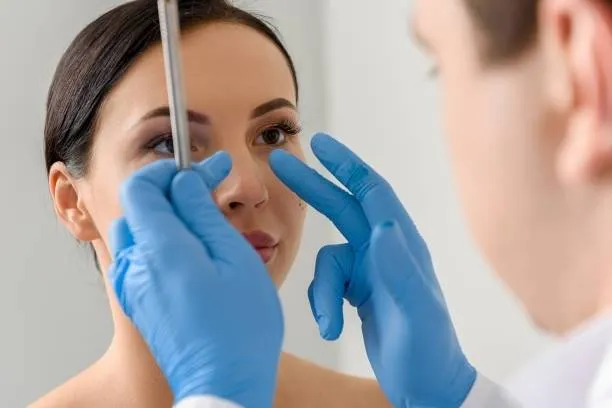Facelift
About The Procedure
Regardless of the multitude of terms used for marketing purposes a facelift remains surgical lifting and suspension of the descended tissues of the face. This can be accomplished with skin only manipulation or with techniques that address the deeper tissues, i.e. SMAS lift. All techniques have advantages and disadvantages and usually reflect a surgeons preference and experience.
Who Would Benefit?
Any person dissatisfied with their appearance because of facial tissue descent secondary to aging may benefit from a facelift. patients who use tobacco, particularly cigarettes are at increased risk for complications. An ideal age does not exist for a facelift. Longevity of the procedure is determined by multiple factors including the quality of a patients skin, technique used and lifestyle choices following the procedure.
The Procedure
Limited procedures may be performed under local anesthesia alone, but more extensive procedures require general anesthesia or local anesthesia with sedation. A facelift is performed by making incisions in front and behind the ear with extension along the posterior hairline as needed. The skin will elevated away from the underlying tissue based on technique and need. Elevation of the deeper tissue may then be performed by sutures directly in this tissue or by traction of the raised skin. the excess skin is then trimmed and closure is performed based on surgeon preference. Procedure length is 1 to 3 hours. Sutures are usually removed at 5 to 7 days following the procedure. Depending on the extent of the procedure drains may be used which are usually removed the following day.
Recovery
Recovery is dependent on the extent of the procedure. Patients with limited procedures may return to activities in 1 to 3 days whereas with more extensive procedures it may be 1 to 3 weeks.
Browlift
About The Procedure
A brow lift is elevation of the eyebrows to a more pleasing rested and alert position. It can be combined with other procedures such as a facelift or eyelid surgery.
Who Would Benefit?
The patients that benefit from a brow lift are those that have eyebrows that have descended with time. This is usually due to gravity, the downward pull of the muscles surrounding the eye, and loss of supporting tissues under the brow. Many patients present wanting their upper eyelids reduced when in fact the descended brow is the real issue. The assessment of brow position as well as frontal muscle activity is critical in decision making.
The Procedure
A brow lift may be performed with incisions along the frontal hairline, in the scalp, in the forehead, or with limited incisions and the aid of an endoscope. The more extensive procedures require general anesthesia, but lesser procedures can be performed under local anesthesia. In addition to elevating and shaping the brow the muscles that cause glabellar frownlines, also known as "the 11'S", can be weakened. Fat grafting may also be performed to add soft tissue support under the lateral brow as well as to treat deeper wrinkles. Drains may be used, but usually not in direct excisional lifts. When used drains are removed the first day following the procedure. Procedure time is 1 to 2 hours. Suture or staple removal is at 5 to 7 days following the procedure.
Recovery
Recovery from limited procedures is usually days with suture removal at one week. more extensive procedures require 1 to 3 weeks to resume unrestricted activity. Forehead and scalp numbness is common with the more extensive procedures but usually resolves in 1 to 3 months.
Facial Fat Grafting
About The Procedure
Facial fat grafting involves transfer of fat, usually from the abdomen or thigh to the face. It is an effective and economical way for facial rejuvenation. Best results are achieved with multiple sessions spaced 3 months apart.
Who Would Benefit?
Patients who lack facial volume either due to aging or their genetic predisposition.
The Procedure
Performed as an office procedure under local anesthesia. An anesthetic mixture is injected into the area where fat will be harvested. The fat is then removed with syringe liposuction and then centrifuged. Facial anesthesia is then achieved by direct injections and nerve blocks. Once facial anesthesia is achieved the fat is transferred with fine blunt tip cannulas to multiple areas based on patient need. Procedure length is typically 1 to 2 hours. Sutures are not required.
Recovery
Recovery is rapid with minimal bruising and swelling.
Rhinoplasty
About The Procedure
Rhinoplasty is manipulation of the cartilage and or bone of the nose to improve appearance and function. It may be performed with incisions inside the nose or external ones. Correction of septal issues may be performed concurrently.
Who Would Benefit?
Patients unhappy with the appearance and or function of the nose.
The Procedure
The procedure may be performed under local anesthesia , but usually is performed under general anesthesia. Nasal cartilage may be removed, reshaped or added based on the problem. Bone may be removed, altered and or added based on the patients anatomy and issues. Procedure length is 1 to 3 hours. External sutures are removed at one week and internal sutures are dissolvable.
Recovery
Bruising and swelling is expected particularly when bone is manipulated. external splints are removed at 5 to 7 days. Most patients return to unrestricted activity by 3 weeks.Bruising and swelling is expected particularly when bone is manipulated. external splints are removed at 5 to 7 days. Most patients return to unrestricted activity by 3 weeks.
Perio-Oral / Lip Enhancement
About The Procedure
Lip enhancement is to improve volume and definition as well as other aesthetic parameters of the lip. This can be achieved by injections of filler or fat , insertion of implants or surgeries to increase vermilion show (vermilion advancement), decrease upper lip length (central lip lift), as well as to correct down turned corners of the mouth (corner of mouth lift).
Who Would Benefit?
Patients who have loss of lip definition, volume, or shape due to the aging process may benefit from some or all of these procedures. Additionally younger patients who are unhappy with lip volume and vermilion show.
The Procedure
All procedures can be performed under local anesthesia including insertion of lip implants. Injections of both filler and fat are easily performed although fat requires harvesting. Implants are inserted through small incisions in the corners of the upper and lower lips. Central lip lift involves excision of skin under the nose and corner of the mouth lift involves excision of triangles of skin and transposition of the corner to a higher position. Procedure length is 15 minutes to one hour. Sutures when used are either removed at 5 to 7 days or are dissolvable.
Recovery
Bruising and swelling are usual , but will resolve within 3 to 7 days. Return to usual activities is typically one week
Upper Eyelid Surgery / Upper Blepharoplasty
About The Procedure
Upper eyelid surgery or blepharoplasty involves removal of excess eyelid skin and less frequently fat.
Who Would Benefit?
Patients with excess skin obscuring their vision or those who appear tired. Patients with true ptosis or a lid that that does not open properly when the brow is elevated will require additional procedures.
The Procedure
Upper eyelid surgery can be performed under local anesthesia, local anesthesia with sedation or under general anesthesia. It involves removal of excess skin alone, but can also remove excess deposits of fat. Procedure length is typically one hour or less. Removal of sutures is at 3 to 5 days following the procedure.
Recovery
Recovery is usually rapid although swelling and bruising are expected. Dry eyes are common following the procedure particularly in the arid climate of Nevada, but usually resolve.
Lower Eyelid Surgery / Lower Blepharoplasty
About The Procedure
Lower eyelid surgery is directed more at removal or transposition of the fat that causes puffy lower eyelids with less emphasis on skin removal
Who Would Benefit?
Patients that have puffy lower eyelids either due to aging or genetic predisposition. Patients with prominent eyeballs relative to the cheek bone may require additional procedures to guard against lower eyelid descent.
The Procedure
Lower eyelid surgery may be performed under local or general anesthesia. Incisions are either inside the lower eyelid, trans-conjunctival, or through an external incision under the eyelashes. Fat is removed or transposed based on anatomy. Transposition of fat is used to fill in the tear trough. Skin excision is usually conservative to help guard against lower eyelid being pulled down. Procedure length is usually one hour or less. Trans-conjunctival incisions do not require sutures whereas the external sutures are removed at 3 to 5 days following the surgery.
Recovery
Bruising and swelling is expected, but usually resolves in 3 to 7 days. Return to work and activities is usually within a week, but may vary with the patient.

We Are Here To Help
Beauty is in the eye of the beholder – YOU. When you look in the mirror, are you satisfied with what you see? Or do you wish for a different nose, fuller lips or tighter skin? Having cosmetic plastic surgery can not only improve your appearance, but give you a renewed self-confidence.



